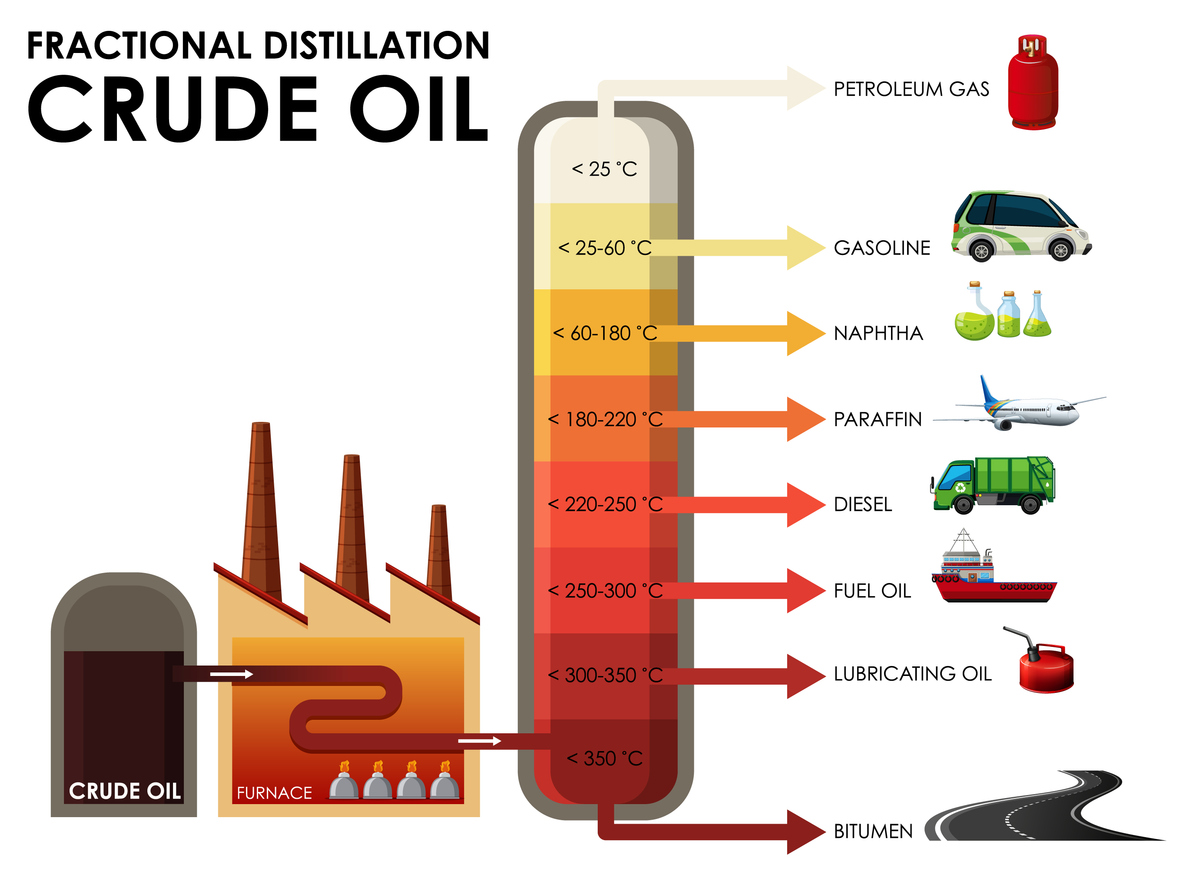Written on: April 11, 2024

When you flip the switch on your thermostat to ward off the winter chill, do you ever wonder about the journey of the fuel that warms your home? Home heating oil, a staple for many households, undergoes a fascinating transformation from its raw form in crude oil to the refined product that fuels your furnace. Join us as we explore the distillation process that turns crude oil into the comforting warmth of home heating oil.
1. The Source: Crude Oil
It all begins deep beneath the Earth’s surface, where crude oil, a mixture of hydrocarbons, lies trapped in underground reservoirs. Crude oil is a complex substance containing a variety of compounds, ranging from light gasses to heavy, viscous liquids. It’s extracted from the ground through drilling and brought to the surface for processing.
2. Fractional Distillation: Separating the Components
Once crude oil reaches the surface, it undergoes a process called fractional distillation at oil refineries. This process involves heating the crude oil in a large distillation tower, where it’s separated into its various components based on their boiling points.
As the crude oil is heated, lighter compounds with lower boiling points, such as methane and propane, vaporize first and rise to the top of the distillation tower. These gasses are collected and used for various purposes, including fuel for heating and cooking.
3. Mid-Distillates: Diesel and Home Heating Oil
As the temperature in the distillation tower increases, heavier compounds with higher boiling points begin to vaporize. These mid-distillates include diesel fuel and home heating oil. They’re collected at specific levels within the distillation tower and undergo further processing to remove impurities and adjust their properties.
4. Refining for Home Use: Treating Heating Oil
Once the mid-distillates are collected, they undergo additional refining processes to prepare them for use as home heating oil. This includes removing sulfur and other impurities to improve the fuel’s cleanliness and efficiency. Additives may also be blended into the heating oil to enhance its performance and stability during storage and combustion.
5. Distribution and Delivery
After refining, the home heating oil is ready for distribution to homes and businesses. It’s typically transported via tanker trucks and delivered to customers’ oil tanks, where it awaits use in furnaces and boilers to provide warmth and comfort during the colder months.
6. Combustion: Providing Comfort
Finally, when you turn up the thermostat and ignite your furnace or boiler, the home heating oil is drawn from the tank and pumped to the burner. There, it’s atomized into a fine mist, mixed with air, and ignited to produce a controlled flame. This flame heats the air or water that circulates through your home’s heating system, providing the cozy warmth you rely on.
The journey of home heating oil from crude to comfort is a remarkable process that relies on careful distillation, refining, and distribution. From its origins deep within the Earth to the warmth it provides in your home, heating oil plays a crucial role in keeping us comfortable during the coldest months of the year. So the next time you feel the comforting heat of your furnace, take a moment to appreciate the journey that brought it to you—from crude to comfort. Contact Santa Energy with any questions or concerns about your heating and cooling equipment this spring and summer.